Taiwan Solidarity Union (TSU) Chairman Shu Chin-chiang (
Shu immediately came under fire at home for the visit where he was accused of dignifying Japan's militarism in the early 20th century.
Shu, dressed in a business suit, was cheered on by supporters who unfurled the flags of Japan and his party as he entered the Yasukuni shrine which is dedicated to 2.5 million war dead, including 14 convicted war criminals.
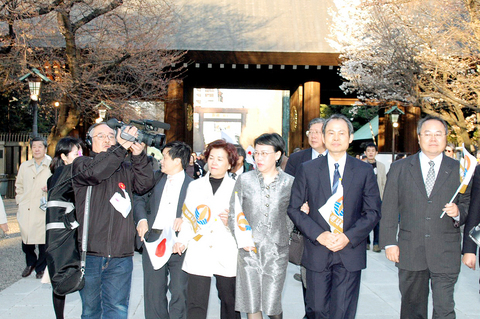
PHOTO: CHANG MAO-SANG, TAIPEI TIMES
He called on Asians to "move beyond the grudges and animosity of the past."
"As one Taiwanese and as a leader of a political party I have come here to pay my respect to the soldiers who sacrificed their lives for Japan," Shu said.
"At the same time, as one Taiwanese, I have come here to pay my respect for 28,000 Taiwanese," whose names are enshrined, he said.
Supporters said it was the first known visit to Yasukuni in modern times by a party leader from Taiwan, which was ruled by Japan from 1895 to 1945.
Pilgrimages by Asian leaders are extremely rare to the Shinto shrine in central Tokyo, although military envoys and attaches from countries in other regions have often paid visits.
China has refused any bilateral visits with Prime Minister Junichiro Koizumi over his visits to the shrine.
"Chinese thinking and perspectives don't represent those in Asia. And more so, they don't reflect the views of Taiwan," Shu said. "As a Taiwanese, I don't agree that China still harbors a grudge."
"I wanted to stress this point that the way every nation mourns its war dead should be respected," he said.
The Yasukuni shrine controversially lists the names of 28,000 Taiwanese and 21,000 Korean soldiers, most of whom were forced into service under Japan's colonial rule.
The holy site also lists the names of Japanese civilians who died in fighting.
The populist Koizumi has visited the shrine four times since August 2001, saying he has the right as a Japanese person to choose how to honor the dead.
His visits have triggered furious protests from China and South Korea and led to a string of unsuccessful lawsuits by Asians bereaved in World War II who accused Koizumi of causing them emotional distress.
In Taipei, Aboriginal legislator Kao-Chin Su-mei (
"Japan launched over 160 battles to destroy Taiwan's Aboriginal tribes during its 51-year colony on the island," he said in a statement.
"We strongly protest the TSU visiting the Yasukuni Shrine," he said. "It is already an insult to Taiwan's Aboriginal people that our soldiers were enshrined there."
TSU spokesman Chen Chien-ming (
"We do not agree with the acts and invasions of the Japanese militarism [during World War II] but we should not let hatred persist," Chen said in Taipei.
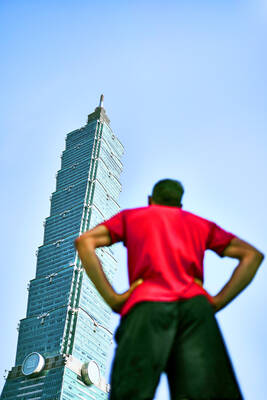
US climber Alex Honnold is to attempt to scale Taipei 101 without a rope and harness in a live Netflix special on Jan. 24, the streaming platform announced on Wednesday. Accounting for the time difference, the two-hour broadcast of Honnold’s climb, called Skyscraper Live, is to air on Jan. 23 in the US, Netflix said in a statement. Honnold, 40, was the first person ever to free solo climb the 900m El Capitan rock formation in Yosemite National Park — a feat that was recorded and later made into the 2018 documentary film Free Solo. Netflix previewed Skyscraper Live in October, after videos
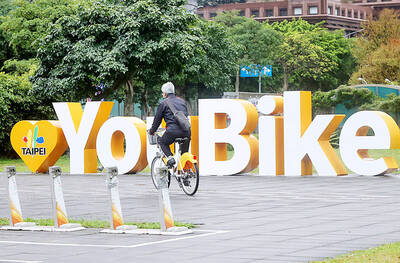
Starting on Jan. 1, YouBike riders must have insurance to use the service, and a six-month trial of NT$5 coupons under certain conditions would be implemented to balance bike shortages, a joint statement from transportation departments across Taipei, New Taipei City and Taoyuan announced yesterday. The rental bike system operator said that coupons would be offered to riders to rent bikes from full stations, for riders who take out an electric-assisted bike from a full station, and for riders who return a bike to an empty station. All riders with YouBike accounts are automatically eligible for the program, and each membership account
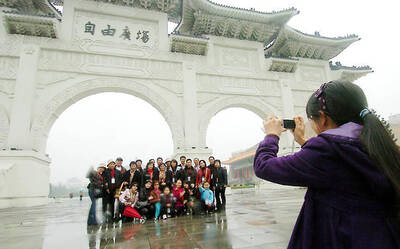
NUMBERS IMBALANCE: More than 4 million Taiwanese have visited China this year, while only about half a million Chinese have visited here Beijing has yet to respond to Taiwan’s requests for negotiation over matters related to the recovery of cross-strait tourism, the Tourism Administration said yesterday. Taiwan’s tourism authority issued the statement after Chinese-language daily the China Times reported yesterday that the government’s policy of banning group tours to China does not stop Taiwanese from visiting the country. As of October, more than 4.2 million had traveled to China this year, exceeding last year. Beijing estimated the number of Taiwanese tourists in China could reach 4.5 million this year. By contrast, only 500,000 Chinese tourists are expected in Taiwan, the report said. The report
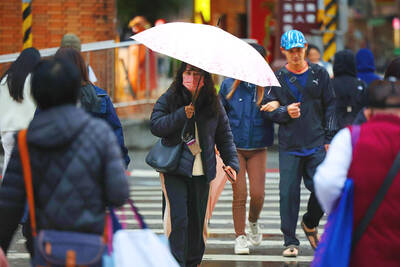
Temperatures are forecast to drop steadily as a continental cold air mass moves across Taiwan, with some areas also likely to see heavy rainfall, the Central Weather Administration (CWA) said. From today through early tomorrow, a cold air mass would keep temperatures low across central and northern Taiwan, and the eastern half of Taiwan proper, with isolated brief showers forecast along Keelung’s north coast, Taipei and New Taipei City’s mountainous areas and eastern Taiwan, it said. Lows of 11°C to 15°C are forecast in central and northern Taiwan, Yilan County, and the outlying Kinmen and Lienchiang (Matsu) counties, and 14°C to 17°C